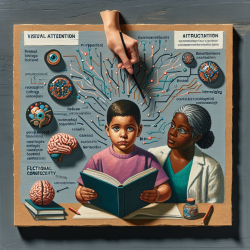As a practitioner working with individuals with autism, staying informed about the latest research is crucial for improving therapeutic strategies. One such study, "Inter-Regional Brain Communication and Its Disturbance in Autism," offers valuable insights into how brain connectivity impacts autism. This research not only sheds light on the neurological underpinnings of autism but also provides a foundation for developing more effective interventions.
The Underconnectivity Theory of Autism
The study highlights the underconnectivity theory of autism, which suggests that individuals with autism experience reduced communication bandwidth between frontal and posterior cortical areas. This limitation affects various psychological processes that rely on integrated brain functioning. The research emphasizes that this disrupted connectivity is not localized to a single brain area but involves multiple regions, affecting behaviors such as language comprehension and social interaction.
Implications for Practitioners
Understanding the underconnectivity theory can significantly enhance a practitioner's approach to therapy. Here are some practical applications:
- Tailored Interventions: Design interventions that focus on improving coordination between frontal and posterior brain regions. Activities that require integrated cognitive processes can help strengthen these connections.
- Monitoring Progress: Use neuroimaging techniques like fMRI and DTI to assess changes in brain connectivity over time, providing a measurable indicator of therapy effectiveness.
- Individualized Therapy Plans: Recognize that each individual with autism may have different levels of connectivity disruption. Customize therapy plans to address specific connectivity challenges.
- Encouraging Further Research: Stay engaged with ongoing research to continually refine therapeutic approaches. Collaborate with researchers to explore new findings and their practical applications.
The Role of Neuroimaging
The study utilizes advanced neuroimaging techniques such as functional magnetic resonance imaging (fMRI) and diffusion tensor imaging (DTI) to explore both functional and anatomical connectivity in the brain. These tools provide detailed insights into how different brain regions communicate during various tasks, offering a clearer picture of the neurological basis of autism.
Future Directions
The research encourages further exploration into how improving inter-regional brain communication can lead to better behavioral outcomes for individuals with autism. Practitioners are urged to stay informed about new developments in this field and consider participating in studies that aim to enhance our understanding of autism's neurological aspects.
To read the original research paper, please follow this link: Inter-Regional Brain Communication and Its Disturbance in Autism.










